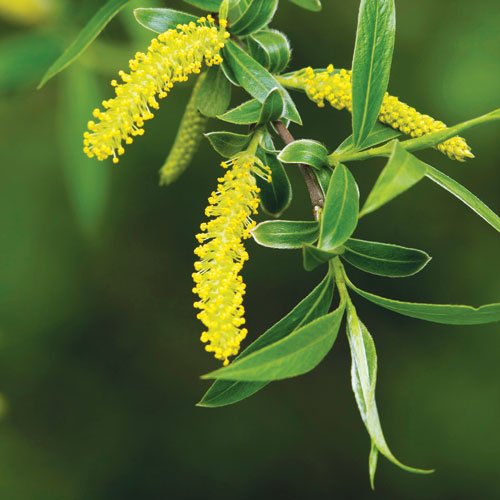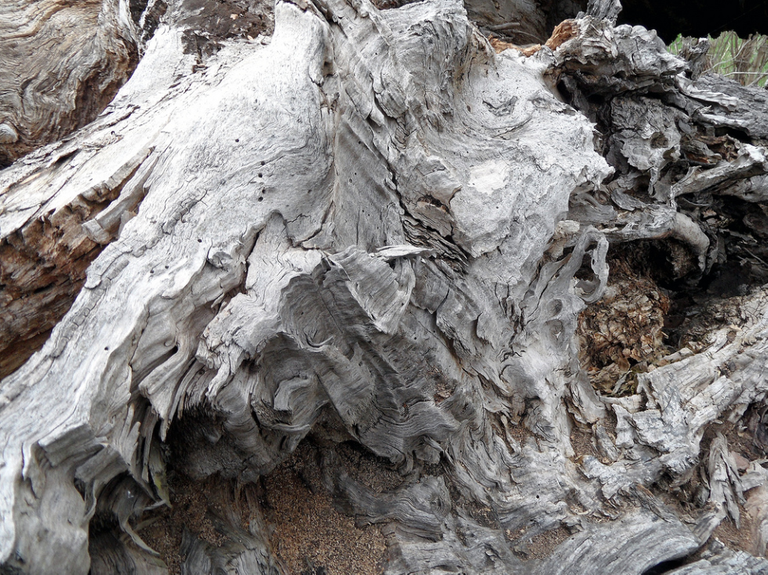
The white willow or salix alba is a deciduous tree of the family Salicaceae or Salicaceae, can reach to reach approximately 25 meters of height and usually inhabits in temperate and humid zones, is common to see them to grow in the borders of the rivers and courses of Water. It is very frequent in Asia and North Africa, being also extended by all the temperate zones of Europe.
Its main peculiarity is that its bark contains salicin, the active principle of acetylsalicylic acid. Formerly, to treat febrile states and reduce pain, salicin extract was extracted directly from the bark, which, when ground, gives off white powders containing this active ingredient. Currently acetylsalicylic acid is manufactured by chemical synthesis without the need to collect salicin from white willow and is marketed under the name "aspirin" (coined by Bayer Laboratories).
Its main peculiarity is that its bark contains salicin, the active principle of acetylsalicylic acid
Salicin is also obtained from other Willow species (Salix genus), as well as Poplars (genus Pópulus). Acetylsalicylic acid (AAS) is a derivative with the same healing properties as salicin, but with less aggressive side effects.

Its leaves of the white willow are of silver green color, they have the sawed margin, they measure between 5 and 12 cm, its form is lanceolate and its silky underside. Its flowers are grouped in cylindrical influorescencias called aments and grow in spring.
This species is dioecious, so the male and female bearings are found in different individuals. The bark is grayish.
The white willow grows very fast, but it is also exposed to more diseases, shortening its life. Its wood is flexible and weighs very little, and is used to make matches, among other utensils.
In the trees, salicin, revitalizes the immune system, helps to withstand droughts, insect pests or in recovering from an injury. This substance is secreted by the cortex and expelled to the outside, in the form of gas.
In humans, it reduces the sensation of pain and, in addition to its analgesic properties, it has anti-inflammatory, anticoagulant and antipyretic properties (fever reduction).
Salicin reduces the characteristic effects of inflammation
Salicin acts by inhibiting the synthesis of prostaglandins, a family of substances of a hormonal nature that intervene in a multitude of physiological processes: They regulate various functions such as blood pressure, blood clotting, allergic inflammatory response and digestive tract activity. These mediators of lipidic nature, are released from the cells very quickly when they suffer some damage, and are very active in the environment of these same cells, causing at the local level effects characteristic of inflammation such as pink coloration, edema and Inflammatory pain.

The synthesis of prostaglandins by cells depends on the activity of the enzyme cyclooxygenase or COX, which converts, by oxidation, arachidonic acid into prostaglandins. Therefore, blocking enzyme activity will lead to a decrease in prostaglandin synthesis and the characteristic effects of inflammation. This is precisely what acetylsalicylic acid does: By inhibiting cyclooxygenase and the subsequent synthesis of prostaglandins, the release of inflammatory substances and mediators is reduced, preventing the typical effects of such as inflammatory pain, fever ...
It is interesting to know that from the initial stages of the development of aspirin until its patent the active principle and some of its effects (beneficial and adverse) were known but it was not known how it induced those effects in the organism, what in pharmacology is called The site and mechanism of action of the drug. To investigate and discover the site and mechanism of action of aspirin, it took more than 70 years since its birth and a great development of Biological Chemistry, Cellular and Molecular Biology, Physiology, among other disciplines.
Cinnamon and Ginger is more effective and safer. X